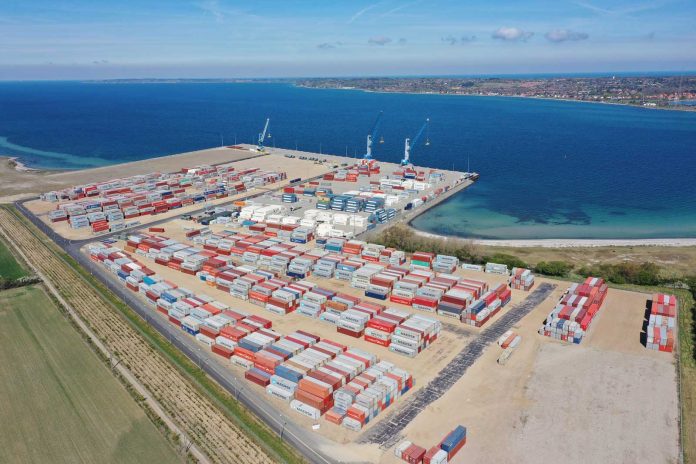Denmark’s Port of Kalundborg intends to electrify all cranes in its deep-water container terminal within seven months.
APM Terminals, operator of the port of Kalundborg since March 2021, said the container handling equipment in the short term will run on HVO100 fuel – or hydrotreated vegetable oil – lowering CO2 emissions by 90%. In the long term, the terminal will investigate various decarbonised solutions for container handling equipment, such as batteries.
The announcement was made on 31 October ahead of Laura Maersk, the world’s first hydrogen-powered container vessel, making its first call at the Danish terminal.
“The commitment by Port of Kalundborg to electrify its cranes, and for APM Terminals to switch to HVO100 fuel means that within months, the terminal will offer customers a huge reduction in landside emissions,” noted Maersk-owned port operator.
Kalundborg will become one of only a handful of APM Terminals to use the biofuel, joining APM Terminals Gothenburg and P400 in Los Angeles which has used a similar renewable diesel since 2021.
“Port of Kalundborg has vast potential as an environmentally friendly and faster route to the important market in and around Zealand. With the measures we are taking, we can offer a green gateway to the Zealand market. Not only is this unique in a Danish context – it is also unique internationally and places Kalundborg on the world map as a leader of the green energy transition,” stated Mikael Gutman, CEO of APM Terminals Nordics.
Mikael Gutman made the remarks just days after APM Terminals and DP World issued a joint White Paper calling for the global electrification of terminal equipment, while Port of Kalundborg was among the first to support the Net-Zero Ports programme.







